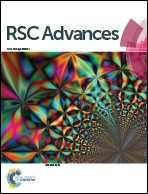Characterization of the unidirectional corrosion of oilwell cement exposed to H2S under high-sulfur gas reservoir conditions
Abstract
The corrosion of H2S on oilwell cement is considered to be a great challenge for wellbore integrity and environmental safety in the exploitation of high-sulfur gas reservoirs. In this study, the corrosion performance of oilwell cement exposed to humid H2S gas and H2S-rich brine was investigated using designed unidirectional samples. Compressive strength, microhardness, porosity, gas permeability, SEM, EDS, and XRD analyses were conducted to compare the dissimilarity of H2S attack in the two exposure scenarios. The experimental results show that the corrosion degree of cement exposed to humid H2S gas was lower due to the dense gypsum layer formed on the cement surface and this layer inhibited the inward penetration of H2S by blocking its diffusion. On the contrary, a porous and loose amorphous silica gel section was formed on the headspace of the brine-exposed cement due to the dissolution and migration effects of brine, which facilitated the penetration of H2S to the interior of the cement. The degradation mechanism of cement and the effects of exposure scenario on cement properties are proposed.


 Please wait while we load your content...
Please wait while we load your content...